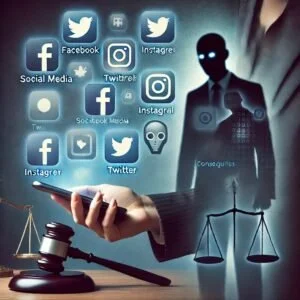When we buy food or beverages, grooming, personal care products, or toys for our children, we expect the product to work as intended and not cause us harm. Suppose a defective consumer product, from contaminated food to beauty products containing carcinogens or even electronics that catch on fire, causes harm to the user when the product is being used as intended by the manufacturer. In that case, the harmed party has the right to file a lawsuit for damages against the product manufacturer or designer.
A defective consumer product lawsuit is a type of personal injury claim. These cases are litigated by personal injury attorneys who understand the necessary legal steps it takes to hold a company accountable for the damage it causes. Even multi-national consumer product corporations aren’t above the law. If negligence or oversight in the design or production process causes harm to the consumer, then these corporations deserve to be held accountable for their actions and fairly compensate the victim.
We can help you understand your options for a defective product claim. Contact Earl & Earl, PLLCtoday for a free consultation.
Colorado Product Liability Laws
Colorado’s product liability statutes permit injured consumers to file a defective product lawsuit on the grounds of negligence, strict liability, or breach of warranty. These are three separate legal doctrines; your case’s structure and your burden of proof may differ depending on the route your Colorado defective products lawyer takes:
Negligence: In a product liability lawsuit, negligence refers to the defendant’s failure to fulfill its legal obligation to create and market reasonably safe consumer products. This doctrine states that if the defendant fails to take reasonable steps to ensure its products are safe for use or consumption, and injuries or death occurs as a result, they can be held liable for the damages the victim or victims suffered.
Strict product liability: Under this doctrine, a victim may recover financial compensation if they can demonstrate that the product contained a fundamental defect and caused their injury. Plaintiffs in these cases may recover damages even without proof of the manufacturer’s negligence.
Breach of warranty: In a breach of warranty lawsuit, the manufacturer or distribution center (including a retail establishment) may be liable if it fails to fulfill a guarantee or promise that the product is safe for use. This promise may be either implied or explicit. For example, a grocery store offering food has an implicit promise that the food is safe to eat.
The grounds for your product liability suit depend on the circumstances surrounding the accident or injury. An attorney can evaluate the evidence and determine which avenue to pursue.
Filing a Product Liability Lawsuit in Colorado
Many personal injury lawsuits involve two parties: the plaintiff (victim) and the defendant (the person or entity alleged to have caused harm to the victim). In a product liability lawsuit, your lawyer may opt to file a suit directly against the product designer, manufacturer, distributor, or place of purchase.
This isn’t the only option available to persons harmed by defective consumer products. Sometimes, many people are harmed in the same manner by the same product. In these cases, the plaintiffs and their attorneys may combine them into a class-action or mass tort lawsuit. In these claims, the lawyers pool their experience and resources and pursue legal action as one. Any recovery from the defendant is shared among the participating plaintiffs.
You may have seen some recent class action and mass tort lawsuits in the news. Several body powder manufacturers have been sued because their products contained talc contaminated with asbestos, which caused mesothelioma and other cancers. Or, perhaps you saw a news article about the makers of RoundUp pesticide and weed killer, which contained unsafe levels of carcinogens.
Colorado’s Statute of Limitations for Product Liability Lawsuits
Another point to note about Colorado product liability lawsuits is the statute of limitations, the deadline you have to file a claim. You have two years from the date of the accident to file a lawsuit. If the contaminated product resulted in disease or illness, then the statute of limitations may be extended, starting from the date of your diagnosis or the time at which you could have reasonably known you were ill. Speak with a lawyer to make sure that you don’t miss this vital deadline – if the statute of limitations passes, then it’s likely your case will be thrown out, no matter how valid your claim is.
How Can a Product Liability Lawyer Help Me?
A Colorado product liability attorney protects your interests and explains your rights under Colorado law. They can evaluate your case and determine which legal doctrines apply, then move forward gathering the appropriate evidence to meet the court’s burden of proof.
Once you retain legal counsel, you can turn over all communications to your lawyer. They can communicate with the other party, their lawyer, and their insurance carrier so you can heal from your injuries in peace. Plus, a lawyer can preserve the integrity of your claim, preventing the insurance company from using what you say as an admission that you caused the accident.
Many product liability lawsuits are settled out of court, in negotiations between the two parties, or in arbitration. Your attorney can take the lead in negotiations, demanding fair compensation for your current and projected future losses. They can also represent you in arbitration, which is like a less formal court hearing.
If your case cannot be settled in negotiations, or if your lawyer believes that a class action or mass tort is more likely to help you achieve a satisfactory outcome, then they can take your case to trial in Colorado civil court.
Experienced Attorneys Fighting for Your Rights
If you or someone you love suffered harm due to a defective, contaminated, or malfunctioning consumer product, you deserve justice. We can help you hold the at-fault party accountable for their negligence and demand full compensation for all your losses. At Earl & Earl, PLLC, we’re not afraid to take on large corporations, and we have the resources and tenacity to handle even the most complex product liability claims. Contact us today for a free consultation.
Colorado Springs Personal Injury Attorney
At Earl & Earl, PLLC, we treat our clients like we would treat members of our family. This means going above and beyond what people typically think of when they consider legal representation. We don’t just push the paperwork through and cut a deal with the insurance company. We help you get the treatment you need. If you need help getting your vehicle fixed, we work with you. If you are struggling to pay bills while you miss work, we walk you through your options. Most importantly, we fight for every bit of compensation you need to get back on your feet. Because we would never settle for less for our own families, we will never settle for less for you.





















